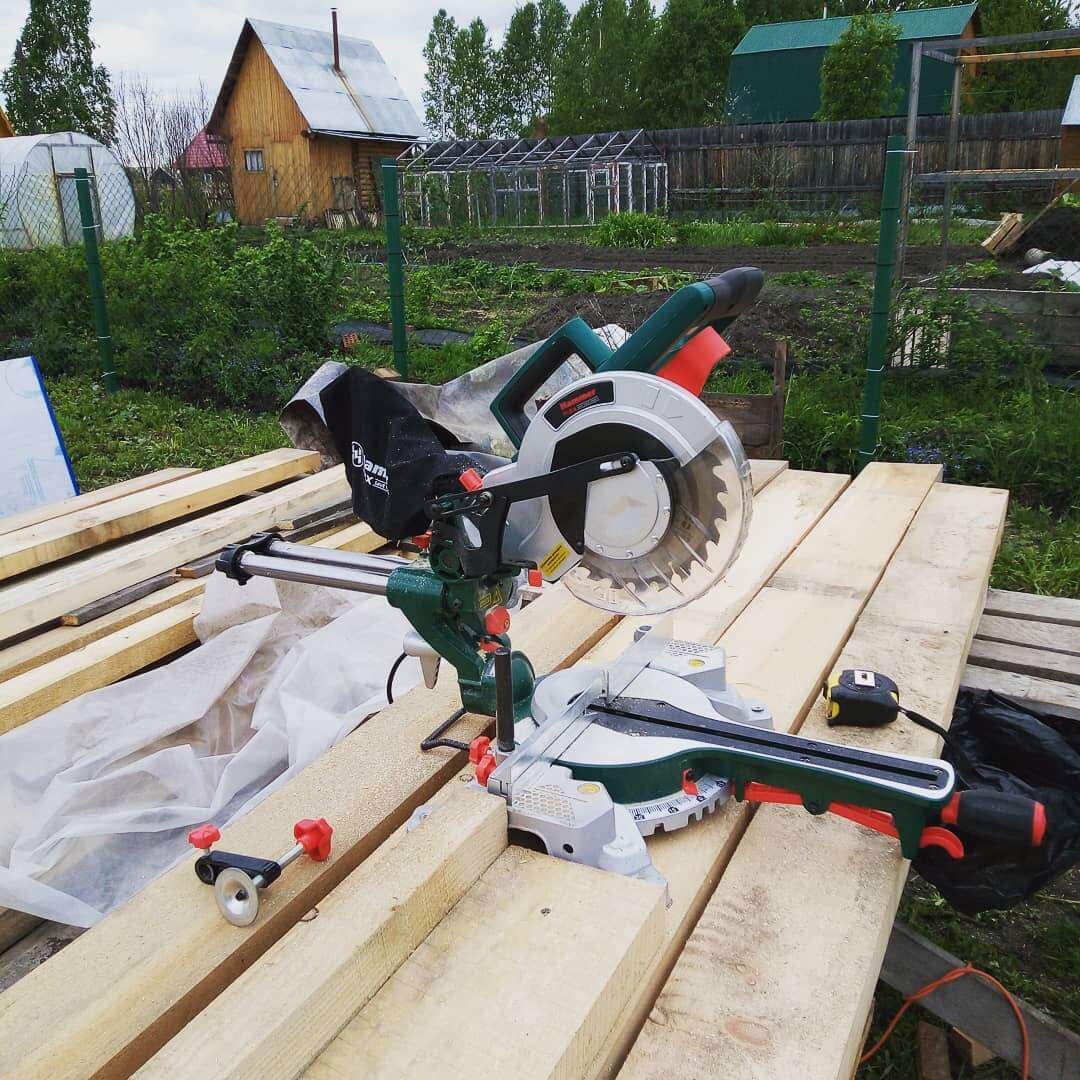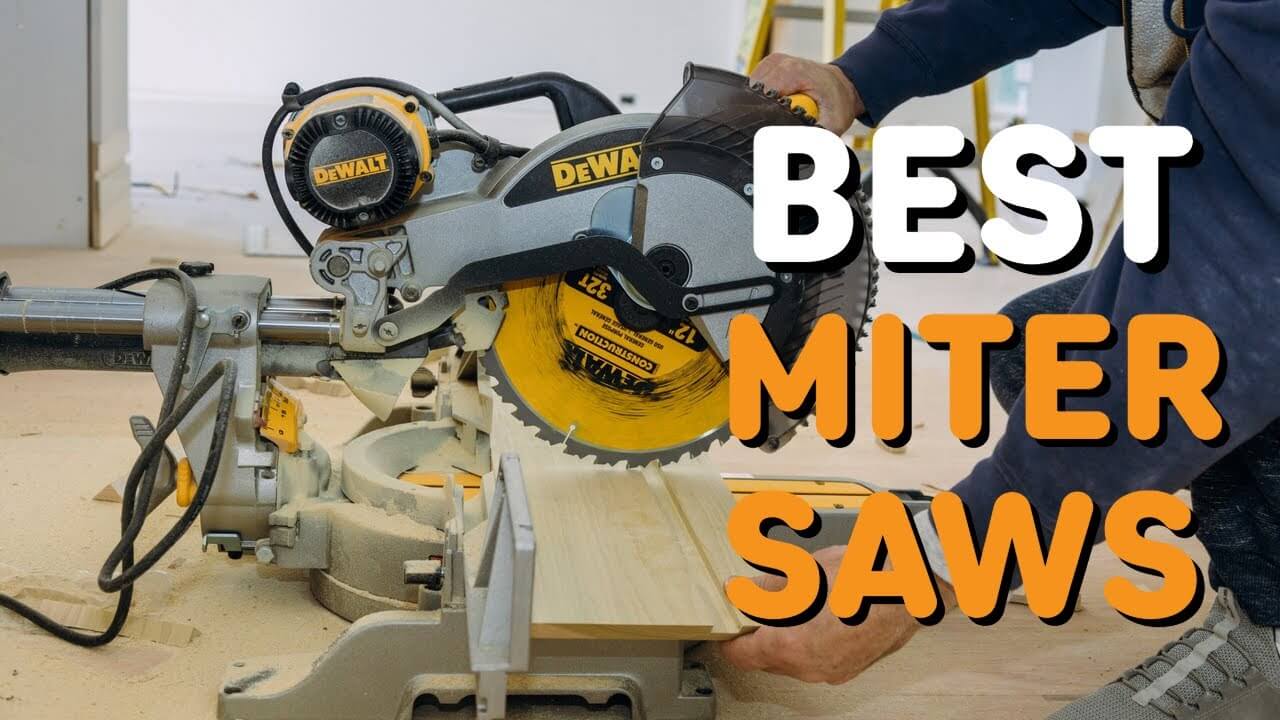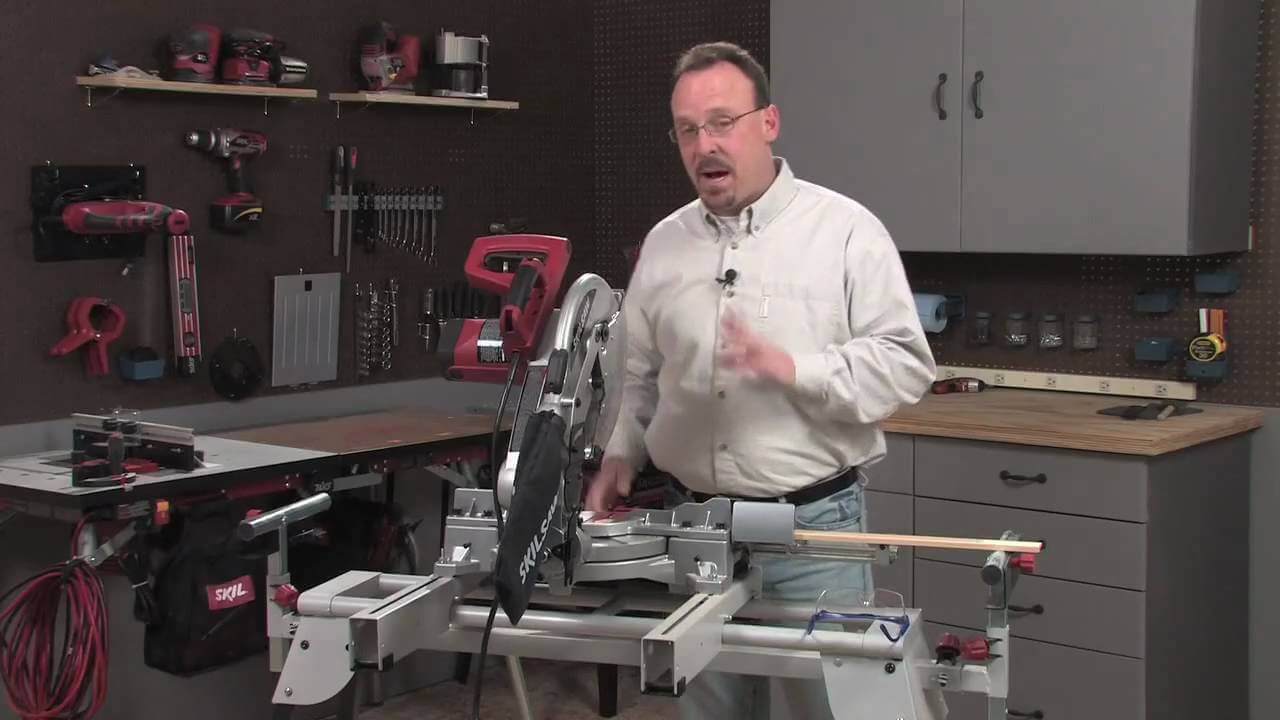Single Bevel vs Dual Bevel Miter Saw
If you’re in the market for a new miter saw, you’ve likely seen the different types of saws on display and might be a tad confused about which one is right for you.
The terminology used to describe these different types of saws is descriptive in terms of each saw’s functionality and cutting capacity.
Generally speaking, whether the miter saw is a single bevel, dual bevel, or sliding compound miter saw, they all have their ideal use cases, and which one is right for you will depend entirely on your specific needs.
So let’s get to it and see which one is the right fit for you.
Difference Between a Single Bevel vs Dual Bevel Miter Saw
Simply put, a single bevel miter saw possesses a saw head that only rotates (bevels) in one single direction (generally to the left).
A dual bevel miter saw has a saw head that rotates in both directions, typically 0° – 48° both left and right, and can make bevel cuts in both directions.
You can most certainly operate effectively with either a single bevel or dual bevel compound miter saw, although the advantage a dual bevel has over a single bevel, this pure efficiency.
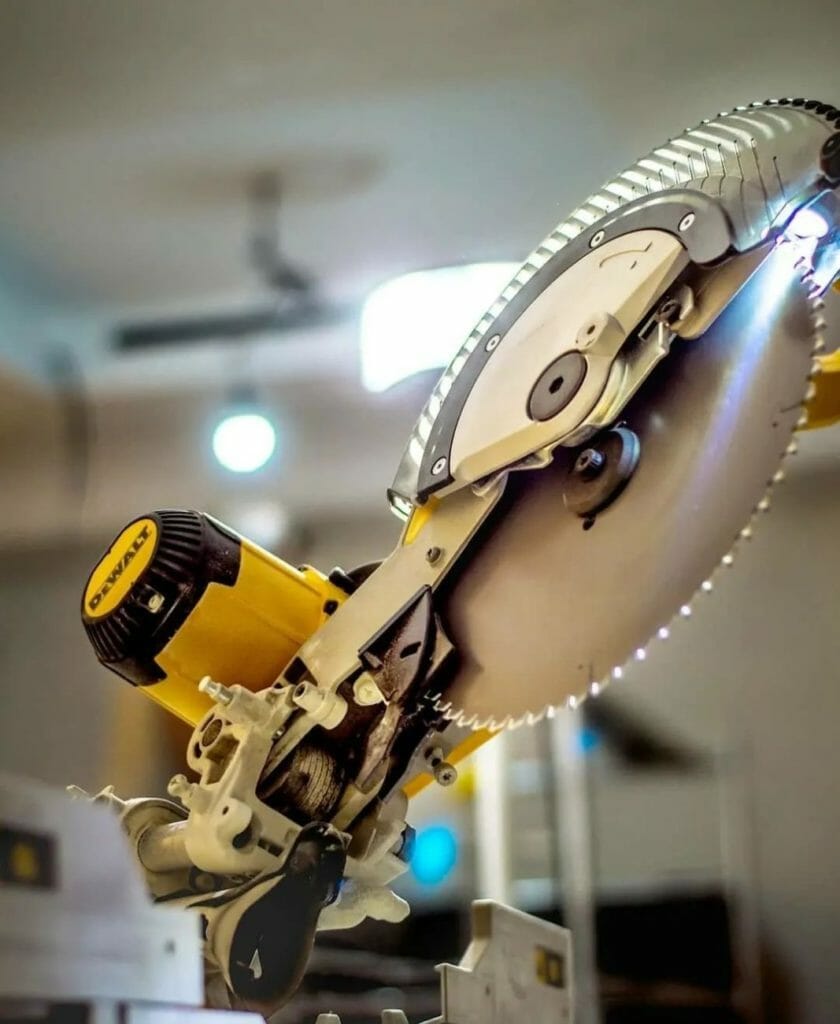
Dual Bevel vs Single Bevel Miter Saw
If you’re cutting lumber with a single bevel saw and need to perform a cut at the opposite angle, you have to flip over the material you’re working with as opposed to simply rotating the saw head to effectively make the cut.
Now, if you’re not planning on using a miter saw on a daily basis, constantly having to rotate your workpiece might not bother you that much.
But, if you’re a professional contractor or you’ve got a major renovation project on the go involving cutting materials at a greater degree of angles like, say, installing some crown molding, a single bevel would not be the ideal choice.
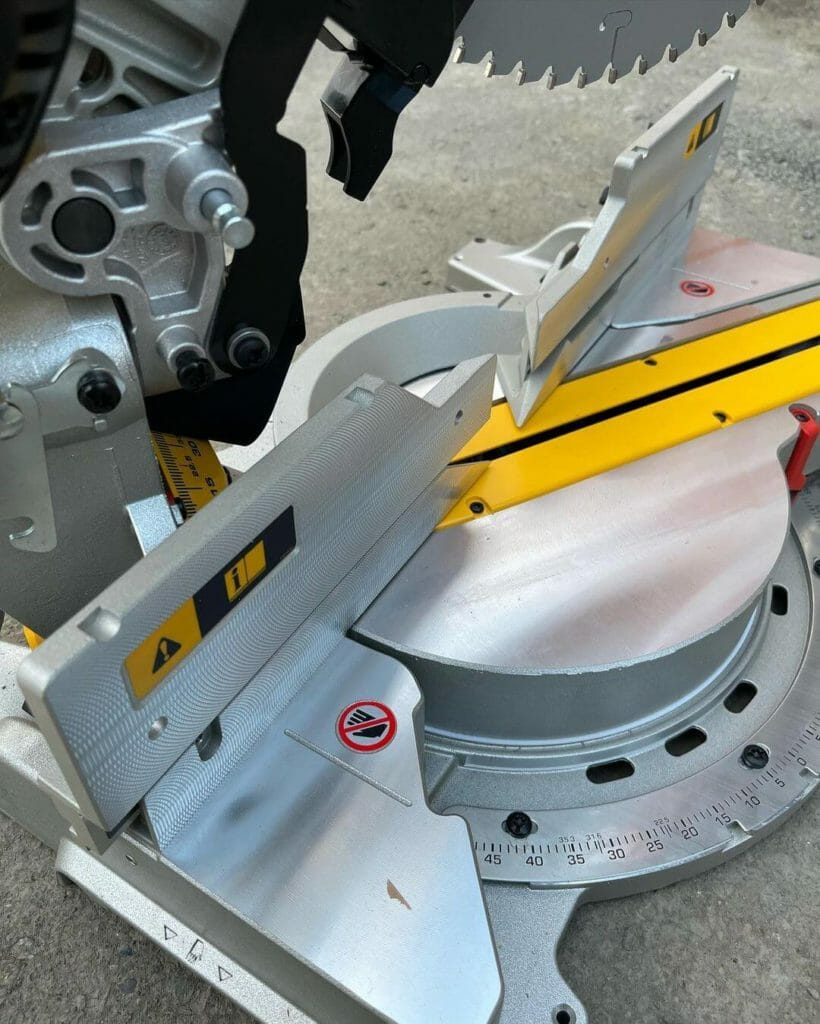
What is The Best Miter Saw to Buy?
While this might boil down to both personal preference and brand loyalty, if you ask the pros, some brands definitely stand out among other brands in regard to both power and precision.
That said, power tools are certainly something you want to make the right decision on the first time, as they can be rather expensive.
While we can make some suggestions about which single bevel, dual bevel, or even sliding compound miter saw you should consider buying, the single bevel vs double debate ultimately comes down to your own needs.
Evaluate the actual demands of the project(s) and your circumstances, not just the fancy saw itself.
Anyway, here are the three best saws of 2022 that you should assess for your future projects by considering the application first.
Best Single Bevel Compound Miter Saw
Single bevel miter saws have their use cases for the ideal applications and are actually quite reliable at getting the job done. They are also a brilliant option for those who are looking to make a variety of angled cuts on a budget.
So, without further ado, let’s see which saw is right for you, and also break down the benefits and burdens of owning a single bevel miter saw.
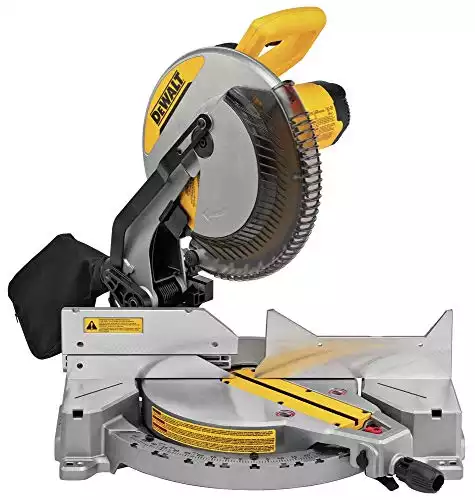 DEWALT DWS715 12-Inch Compound Miter Saw
DEWALT DWS715 12-Inch Compound Miter Saw
- Top-notch budget-friendly 12-inch compound miter saw that can handle a heavy workload.
- Equipped with a powerful 15-Amp motor that generates an impressive 4000 RPM for a budget saw.
- Bevels left at up to 48° & right at up to 3° with positive stops at 0°, 45°, and 33.9° for increased accuracy.
- Includes a carbide blade, dust bag, blade wrench, vertical clamp, and comfortable side handles.
Single Bevel Compound Miter Saw Pros
For most people, single bevel saws are the ideal affordable option for newbies getting into woodworking.
While a single bevel compound miter saw, compared to a sliding compound miter saw has its limitations, it is a very effective power saw that is very easy to operate.
Single bevel saws are also significantly lighter than both dual bevel and sliding compound miter saws, making them the better alternative for those who plan on lugging their new would-be saw around.
Single Bevel Compound Miter Saw Cons
If you need to make cuts on both sides of the workpiece, you’ll have to regularly flip the workpiece as the saw head only pivots in a single direction to the left.
Unfortunately, this time-consuming and rather frustrating con of having to flip the material reduces both efficiency and accuracy. If you’re a pro woodworker, a single bevel saw probably won’t be enough for you. Again, this is all depending on the task at hand.
Best Dual-Bevel Compound Miter Saw
While single bevel miter saws are a fantastic cost-effective option that brings a lot to the table despite their shortcomings, they’re somewhat flawed in comparison to double bevel miter saws.
Let’s take a look at the pros and cons of the dual bevel miter saw and which one we recommend you take a look at for all your cutting needs in every direction required.
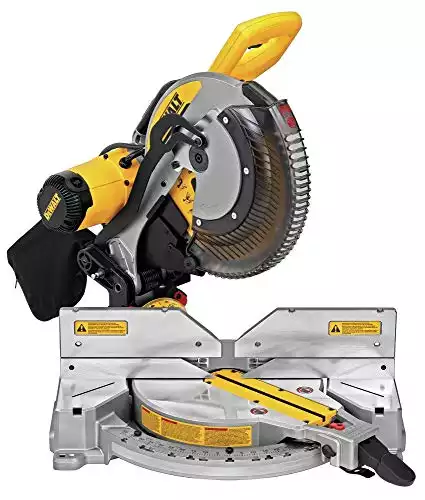 DEWALT DWS716XPS 12-Inch Double Bevel Compound Miter Saw
DEWALT DWS716XPS 12-Inch Double Bevel Compound Miter Saw
- Dual bevel design allows the saw head to bevel left & right 0° - 48° with positive stops at 0, 33.9, 45°.
- Highly durable and powerful 15 Amp motor that produces an impressive 3,800 RPM.
- Equipped with an extra-tall sliding fence that supports that helps difficult jobs like crown molding.
- Fitted with Miter detent override that allows you to override the miter stops and adjust as necessary.
Dual-Bevel Compound Miter Saw Pros
Obviously, you’ll have a much easier time making cuts on both sides of the workpiece without having to flip the darn thing over. Rotating just the saw head as opposed to the entire workpiece when attempting a bevel cut at the opposite angle is far more beneficial.
Dual bevel saws are much more precise than single bevel saws, as you’re removing any and all guesswork. You can achieve smoother finished cuts as you’re not having to make matching cuts by rotating and correctly lining up the material.
Dual-Bevel Compound Miter Saw Cons
Depending on the brand and size of the miter saw, dual bevel saws usually have a higher price tag attached to them.
Apart from the additional cost, they are also a little heavier than their single bevel counterparts.
When comparing single bevel vs double, the difference isn’t that huge, but the double bevel saw generally comes out on top.
Best Sliding Compound Miter Saw
Sliding compound miter saws possess another instrumental characteristic that both single and dual bevel saws don’t.
They have the ability to slide in a back-and-forth direction with assisted guide rails that allow you to increase your cutting capacity across the workpiece.
When you’re working with the likes of crown molding, a sliding compound miter which is typically also a dual bevel saw, will have highly beneficial.
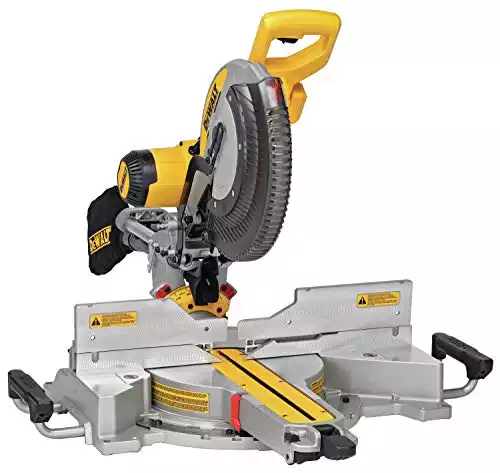 DEWALT DWS780 12-Inch Sliding Compound Miter Saw
DEWALT DWS780 12-Inch Sliding Compound Miter Saw
- Incredibly powerful 15 amp belt-driven motor that generates up to 3800 RPM.
- Superbly crafted stainless steel detent plate with 10 positive stops for increased accuracy.
- Extended sliding fence supports up to 7-1/2" which is beneficial for large projects like; crown molding.
- Includes a high-quality DeWalt 12-inch blade so you're good-to-go right out of the box.
- Swiftly miter right at up to 60° and at 50° to the right, with the push of a button.
Sliding Compound Miter Saw Pros
The sliding compound miter saw is more often than not the cream of the crop when it comes to miter saws. They command a higher price tag but deliver everything you could want from a miter saw.
You’ll find that the average sliding compound miter will have far superior in terms of both features and ability in comparison to other models.
They will boast everything from laser-guided sight, to an increased number of positive stops, a taller sliding fence, and of course, greater cutting capacity.
Sliding Compound Miter Saw Cons
The most obvious con when it comes to buying a sliding compound miter saw is the price of these saws.
Now although they are more costly than the other types of miter saws, they are the better overall product.
The only other downside to sliding compound miter saws is the additional weight. In general, they weigh a bit more than their counterparts and will likely require a portable stand with wheels to move around effectively.
When to Get a Single Bevel Miter Saw?
Before you make a snap decision and make a purchase on a whim, ask yourself what you’ll do with a miter saw? If you’re going to make miter, bevel, or angled cuts, a single bevel saw will suffice.
This saw will come in handy when constructing trim jobs, assembling picture frames, or cutting fence palings. If you’re a beginner, it’s recommended that you start with a single bevel saw.
If you’re a DIYer, the single bevel saw will be a perfect match for you. This is a great tool to have around the house. Although, if you’re planning on using a miter saw to cut baseboards, using a single bevel saw will have its drawbacks.
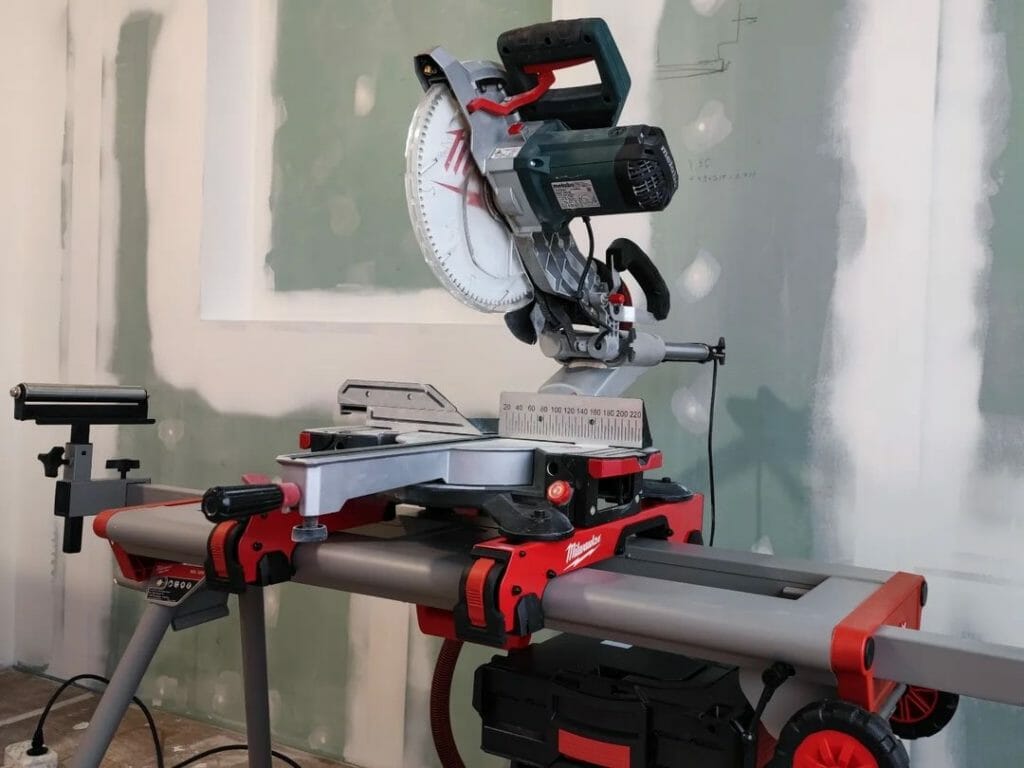
When to Get a Dual-Bevel or Sliding Miter Saw?
On the other hand, if you’re a professional or serious craftsman, the right choice for you is pretty obvious.
You’ll make better use of a dual bevel, even if you have to pay a little extra for it. If you’re experienced, a dual bevel saw will feel natural, and you’ll get used to it pretty quickly. But it could be a little heavier, so bear that in mind.
Otherwise, it’s much more versatile, and it allows you to make more accurate and precise cuts in both left and right directions from more angles. If you have an eye for detail, you’ll appreciate this type of compound saw.
You can use the dual bevel miter saw for making handcrafted trims, custom woodworking items, expert crown molding, etc.
With that in mind, when comparing a single bevel miter saw to a dual bevel, the dual miter saw comes out on top for professional use, while a single bevel is ideal for rookies getting into woodworking.
The precision of double bevel miter saws becomes noticeable when making the same cuts on each side, and making many cuts match, no matter the number of repetitions. A dual bevel miter saw can do compound miter cuts, giving you a full range of different compound angles.
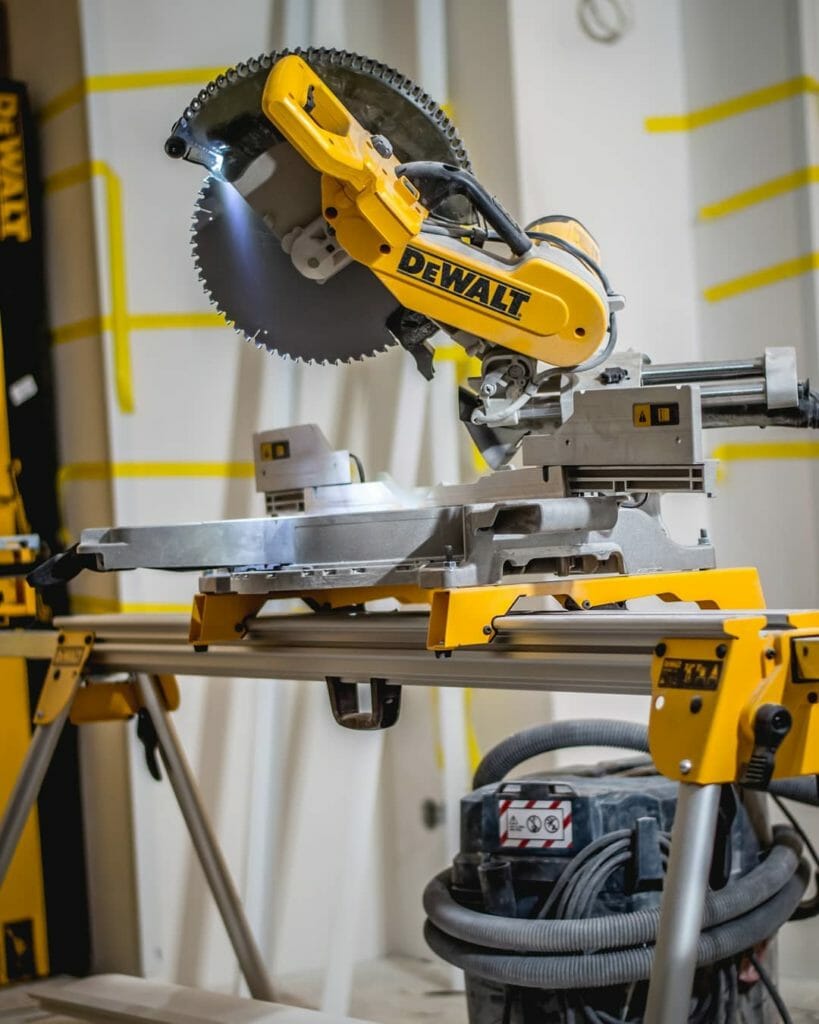
What is a Bevel Cut?
There are four types of woodcuts you can make: bevel, miter, compound, and crosscut. Although bevel and miter cuts are similar, they’re not the same. A bevel is an angled slope that can be vertical or horizontal, but it is always at 45°.
A bevel cut is a cut different than a 90° angle cut, which cuts along the edge of the end of the material. You measure a bevel cut against a straight edge cut.
The blade needs to be adjusted when making a bevel cut, so you need specialized blades, and ideally, you’ll want to change out your standard miter saw blade, with a quality one like a Diablo blade.
A miter cut or an angle cut cuts across the board at a 45° angle. A 90° cut is called a cross-cut – it goes straight up and down. The compound cut is a combination of the angle and the bevel cut.
These are just the basics, but you do need to know the difference between a single and a dual bevel before deciding on which power tool.
In Conclusion
As you’ve no doubt deduced, there’s no clear winner when looking at a single bevel or dual bevel miter saw. They have some great shared features. It all comes down to the amount and type of work you have in front of you.
If you need precision and speed and have a lot of work to do, like, say, a decent install job working with crown molding, a dual bevel miter saw is the right one for you.
On the other hand, if you’re new to the world of woodworking, and only work on the occasional project, more as a hobby, a single bevel miter saw would be much better suited to your needs.
While you might sacrifice a bit in terms of both versatility and power, it will most certainly get the job done. Plus, you could always go with the cheaper option with a single bevel miter saw coupled with a table saw.
Hopefully, this article will help you make the right choice for your future projects, and feel free to leave a reply if you think we left anything of merit out.

